Samik Datta
Reproducibility, Replicability and Beyond: Assessing Production Readiness of Aspect Based Sentiment Analysis in the Wild
Jan 23, 2021

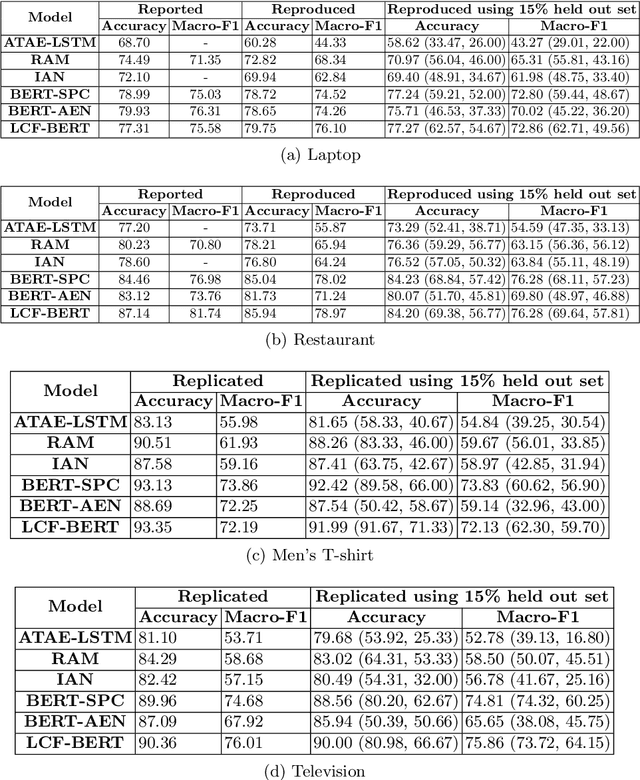

Abstract:With the exponential growth of online marketplaces and user-generated content therein, aspect-based sentiment analysis has become more important than ever. In this work, we critically review a representative sample of the models published during the past six years through the lens of a practitioner, with an eye towards deployment in production. First, our rigorous empirical evaluation reveals poor reproducibility: an average 4-5% drop in test accuracy across the sample. Second, to further bolster our confidence in empirical evaluation, we report experiments on two challenging data slices, and observe a consistent 12-55% drop in accuracy. Third, we study the possibility of transfer across domains and observe that as little as 10-25% of the domain-specific training dataset, when used in conjunction with datasets from other domains within the same locale, largely closes the gap between complete cross-domain and complete in-domain predictive performance. Lastly, we open-source two large-scale annotated review corpora from a large e-commerce portal in India in order to aid the study of replicability and transfer, with the hope that it will fuel further growth of the field.
Audience Creation for Consumables -- Simple and Scalable Precision Merchandising for a Growing Marketplace
Nov 17, 2020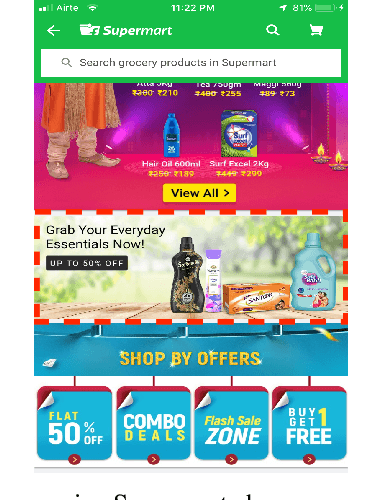
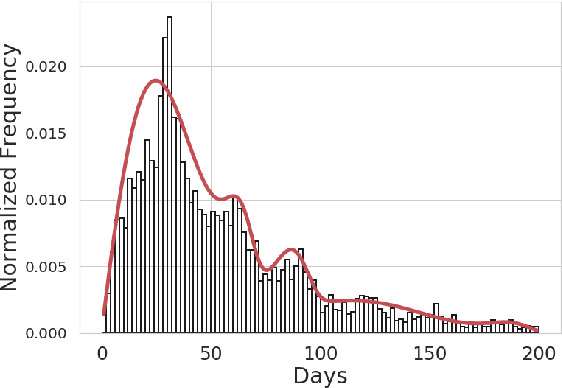
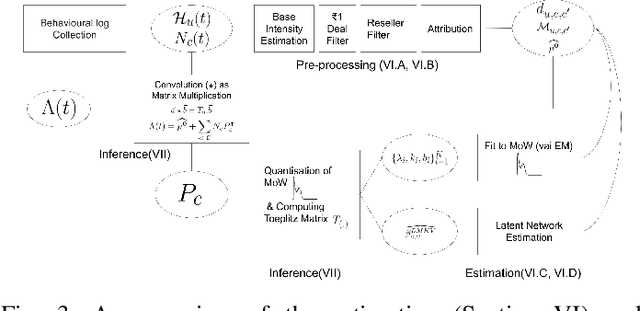
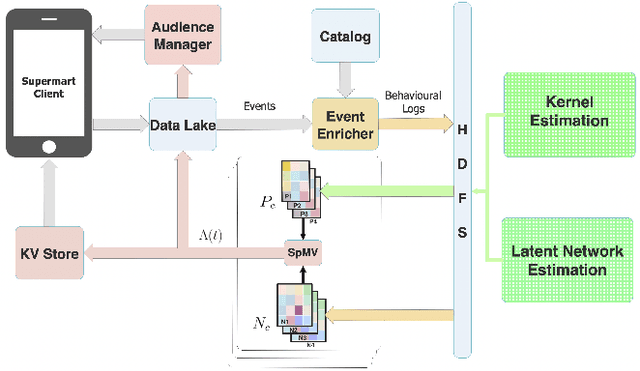
Abstract:Consumable categories, such as grocery and fast-moving consumer goods, are quintessential to the growth of e-commerce marketplaces in developing countries. In this work, we present the design and implementation of a precision merchandising system, which creates audience sets from over 10 million consumers and is deployed at Flipkart Supermart, one of the largest online grocery stores in India. We employ temporal point process to model the latent periodicity and mutual-excitation in the purchase dynamics of consumables. Further, we develop a likelihood-free estimation procedure that is robust against data sparsity, censure and noise typical of a growing marketplace. Lastly, we scale the inference by quantizing the triggering kernels and exploiting sparse matrix-vector multiplication primitive available on a commercial distributed linear algebra backend. In operation spanning more than a year, we have witnessed a consistent increase in click-through rate in the range of 25-70% for banner-based merchandising in the storefront, and in the range of 12-26% for push notification-based campaigns.
 Add to Chrome
Add to Chrome Add to Firefox
Add to Firefox Add to Edge
Add to Edge